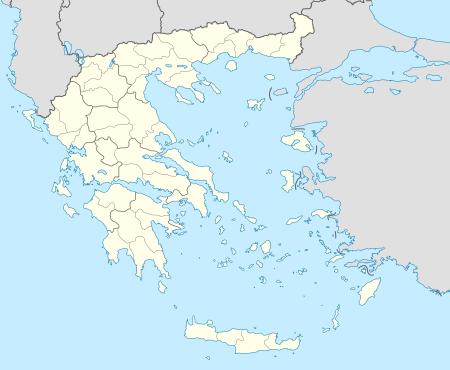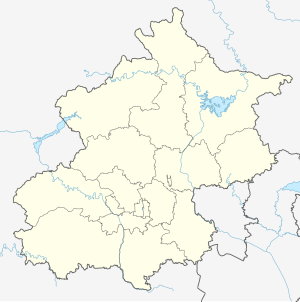2022 Winter Olympics torch relay
 | |
| Host city | Beijing, China |
|---|---|
| Countries visited | Greece, China |
| Torch bearers | 1,200 |
| Theme | Welcome the promise of ice and snow and head towards a better future |
| Start date | 18 October 2021 |
| End date | 4 February 2022 |
The 2022 Winter Olympics torch relay was run from 18 October 2021 until 4 February 2022. After it was lit in Olympia, Greece, the torch traveled to Athens in a car.[1] and was handed to Beijing on 20 October.[2][3] The Chinese leg ended in Beijing National Stadium, at the end of the opening ceremony. On 20 October 2021, it was announced that the Chinese leg had only three days, following a series of displays of the flame in cities around Beijing.The physical relay started on 2 February, at the morning of the first day of the Chinese New Year as stage 3. Unlike the previous relays, the relay only visited the three venues clusters, the main sights of Beijing and the city of Zhangjiakou.[4] The final torch was lit by long-distance runner Dilnigar Ilhamjan (Dinige'er Yilamujiang) and nordic combined Zhao Jiawen.
Relay
[edit]Activists staged a protest at the Olympic torch lighting ceremony in Greece.[5]
The choice to have Qi Fabao, a People's Liberation Army commander famous for his participation in the 2020–2021 China–India skirmishes, be a torchbearer has been controversial with India launching a diplomatic boycott of the games as a result.[6]
Route in Greece
[edit]Route in China
[edit]Flame display leg (stage 1)
[edit]| Division | Route | Map |
|---|---|---|
| Beijing | 20 October (day 1): Beijing |
Beijing municipal leg (stages 2 and 3)
[edit]- February 2
- 1. Beijing
- February 4
- 3. Yanqing
- 4. Beijing National Stadium
- February 3
- 2. Zhangjiakou
End of Torch Relay
[edit]
The relay ended after the 2022 Winter Olympics opening ceremony, when the Olympic Cauldron was lit by Altay Uyghur cross-country skier Dilnigar Ilhamjan, and nordic combined Zhao Jiawen.
After the cauldron in the stadium was lit, the three venues clusters' cauldron was lit right after the end of the opening ceremony.
- Taizicheng Cluster - cauldron located at its central plaza. It was lit by the 19 y.o. free/slopestyle skier Wang Wenzhuo (王文卓) from Zhangjiakou.
- Yanqing Cluster - permanent cauldron located in Yanqing Main Plaza. It was lit by the 10 y.o. short track speed skater Wang Hanyi (王瀚一) from Yanqing, who ranked first place in 500m event at Beijing municipal short track championships.
- Beijing Cluster - The main cauldron is located between the Nation Stadium and the Ice Cube. It was lit by Zhang Junying (张军英), an architect and former olympic cycling racer,she was among the group of designers of the National Stadium project and a volunteer of the 2022 Winter Olympics.
References
[edit]- ^ Weather, protest, cloud - Beijing flame-lighting rehearsal[permanent dead link], washingtonpost.com, Sunday, October 17, 2021,
- ^ "The Olympic flame lighting ceremony for the Beijing 2022 Games will take place on 18 October 2021". Hellenic Olympic Committee. Archived from the original on 25 September 2021. Retrieved 25 September 2021.
- ^ "2022 Olympic flame to be lit in Greece without spectators". www.china.org.cn. Archived from the original on 25 September 2021. Retrieved 25 September 2021.
- ^ "北京2022年冬奥会火种欢迎仪式在京举行". Beijing2022.cn. Archived from the original on 18 August 2021. Retrieved 20 October 2021.
- ^ O'Donnell, Noreen (28 January 2022). "Uyghurs, Tibetans, Hong Kongers Join Together to Protest Beijing Olympics". nbcchicago.com. NBC Chicago. Retrieved 31 January 2022.
- ^ Ramachandran, Sudha. "India Joins Diplomatic Boycott of Beijing Winter Olympics". thediplomat.com. The Diplomat. Retrieved 3 February 2022.




